
The Keys of This Blood is a 1990 non-fiction geopolitical book by former Catholic Jesuit priest Malachi Martin.

The Keys of This Blood is a 1990 non-fiction geopolitical book by former Catholic Jesuit priest Malachi Martin.
Martin wrote this book as a geopolitical and georeligious analysis of the last decades of the 20th century. He identifies this period as the millennium end-game for a new world order, which has three main contenders. It will establish the first ever one-world government. Pope John Paul II, Mikhail Gorbachev, and international business leaders are in competition to establish this one world government and that this competition will intensify around the turn of the 21st century (around 2000). The book further claims to be an inside account of what the pope is doing to win this geopolitical struggle and how he played an instrumental role in the collapse of the Iron Curtain.
Martin identifies the three main players vying for world domination in the world today and thus lays the ground for his historical analysis: materialism with the East and West in their communism or socialism and capitalism or liberalism, which he places on one side together, and the Roman Catholic Church, the only truly geopolitical spiritual organization in existence today. One of the two sides must win, for they cannot coexist.
Martin introduces the concept of superforce in the book. Superforce is the unofficial name given by Martin for a more or less formal group of people within the hierarchy of the Catholic Church (82). Martin claimed that this superforce is a sort of ecclesiastical version of a hostile corporate takeover team and that it was made up of churchmen of such rank and power within the Vatican and at key points of the hierarchic structure that they controlled the most vital organs and sinews of that structure, worldwide. The goal of this organisation consist in a fundamental shift in church teachings. [1]
The book was translated into Spanish, Polish and German.

The pope, also known as the supreme pontiff, Roman pontiff or sovereign pontiff, is the bishop of Rome, head of the worldwide Catholic Church, and has also served as the head of state or sovereign of the Papal States and later the Vatican City State since the eighth century. From a Catholic viewpoint, the primacy of the bishop of Rome is largely derived from his role as the apostolic successor to Saint Peter, to whom primacy was conferred by Jesus, who gave Peter the Keys of Heaven and the powers of "binding and loosing", naming him as the "rock" upon which the Church would be built. The current pope is Francis, who was elected on 13 March 2013.

The Catholic Church, also known as the Roman Catholic Church, is the largest Christian church, with 1.3 billion baptized Catholics worldwide as of 2019. It is among the world's oldest and largest international institutions, and has played a prominent role in the history and development of Western civilization. The church consists of 24 sui iuris churches, including the Latin Church and 23 Eastern Catholic Churches, which comprise almost 3,500 dioceses and eparchies located around the world. The pope, who is the bishop of Rome, is the chief pastor of the church. The Diocese of Rome, known as the Holy See, is the central governing authority of the church. The administrative body of the Holy See, the Roman Curia, has its principal offices in Vatican City, a small independent city-state enclave within the Italian capital city of Rome, of which the pope is head of state.
Malachi Brendan Martin, also known under the pseudonym of Michael Serafian, was an Irish-born American Traditionalist Catholic priest, biblical archaeologist, exorcist, palaeographer, professor, and prolific writer on the Roman Catholic Church.
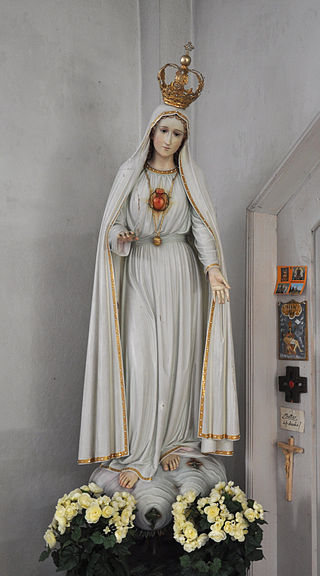
The Three Secrets of Fátima are a series of apocalyptic visions and prophecies reportedly given to three young Portuguese shepherds, Lúcia Santos and her cousins Jacinta and Francisco Marto, by a Marian apparition, starting on 13 May 1917. The three children claimed to have been visited by the Virgin Mary six times between May and October 1917. The apparition is now popularly known as Our Lady of Fátima.
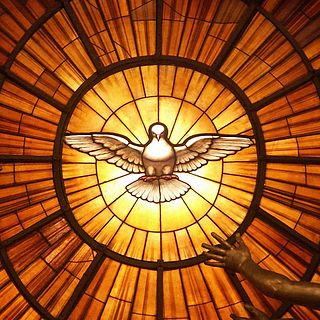
The Catholic Charismatic Renewal (CCR) is a movement within the Catholic Church that is part of the wider charismatic movement across historic Christian churches.
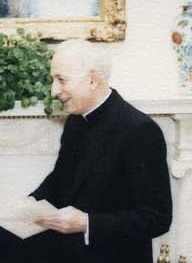
Pio Laghi was an Italian cardinal of the Catholic Church. His service was primarily in the diplomatic service of the Holy See and the Roman Curia. He served as Apostolic nuncio to several countries and as the Prefect of the Congregation for Catholic Education. He was elevated to the cardinalate in 1991. Cardinal Laghi was Pope John Paul II's secret emissary to the White House and to several presidents of the United States. He had a particularly close relationship with George H. W. Bush, and George W. Bush.

The Myth of Hitler's Pope: How Pope Pius XII Rescued Jews from the Nazis is a 2005 book by American historian and Rabbi David G. Dalin. It was published by Regnery Publishing.

Some hold the conspiracy theory which asserts that the conservative Cardinal Giuseppe Siri, then the Archbishop of Genoa, was elected pope in the 1958 papal conclave, taking the name Pope Gregory XVII, but that his election was suppressed. Siri did not associate himself with this idea.

The Diocese of Sioux Falls is a Latin Church diocese of the Catholic Church diocese in South Dakota in the United States. It is a suffragan see of the metropolitan Archdiocese of Saint Paul and Minneapolis.
Superforce may refer to:
Joseph Léo Charron C.PP.S. is an American prelate of the Roman Catholic Church. Charron served as bishop of the Diocese of Des Moines in Iowa from 1994 to 2007 and as an auxiliary bishop of the Archdiocese of Saint Paul and Minneapolis in Minnesota from 1990 to 1994.
The Philadelphia Church of God (PCG) is a non-trinitarian, sabbatarian church based in Edmond, Oklahoma, US. The PCG is one of several offshoots of the Worldwide Church of God (WCG), founded by Herbert W. Armstrong (1892–1986). The PCG was established by Gerald Flurry with the stated purpose of continuing Armstrong's teachings, which were re-evaluated and subsequently rejected by the WCG after Armstrong's death, as it came to accept orthodox Christian teachings, such as the Trinity. Armstrong had rejected the Trinity doctrine in favor of the view that God is not one but two separate God-beings into which Family, according to Armstrong, humans upon true conversion and spiritual growth, may be born.

Pope John Paul II's political views were considered conservative on issues relating to reproduction and the ordination of women during his 26-year reign as pope of the Roman Catholic Church and sovereign of Vatican City. A series of 129 lectures given by John Paul during his Wednesday audiences in Rome between September 1979 and November 1984 were later compiled and published as a single work entitled ‘Theology of the Body’, an extended meditation on the nature of human sexuality. He also extended it to condemnation of abortion, euthanasia and virtually all uses of capital punishment, calling them all a part of the "culture of death" that is pervasive in the modern world, advocating instead what he understood to be a "culture of life". He campaigned for world debt forgiveness and social justice.
The historical roots of Papal primacy can be traced back to the early centuries of Christianity, wherein the Bishop of Rome, commonly referred to as the Pope, gradually accrued increasing authority and recognition. A confluence of historical, theological, and political factors contributed to this development.

Holy See–Soviet Union relations were marked by long-standing ideological disagreements between the Catholic Church and the Soviet Union. The Holy See attempted to enter in a pragmatic dialogue with Soviet leaders during the papacies of John XXIII and Paul VI. In the 1990s, Pope John Paul II's diplomatic policies were cited as one of the principal factors that led to the dissolution of the Soviet Union.
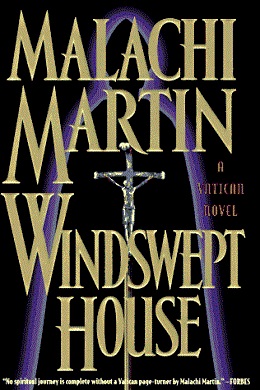
Windswept House: A Vatican Novel is a 1996 novel by former Jesuit priest Malachi Martin. The novel details turmoil within the Catholic Church and corruption in Vatican City. Malachi alleged the novel depicted real events in the form a non-fiction novel similar to the works of Taylor Caldwell, or Truman Capote'sIn Cold Blood.
This article details the history of the Catholic Church in Brazil from the colonial era until the modern era. The Federative Republic of Brazil is the largest country in South America. It is the world's fifth largest country, both by geographical area and by population with over 201 million people. Catholicism is the country's predominant faith with approximately 64.6% of the population identifying as a member of the religion. Brazil has the world's largest Catholic population.
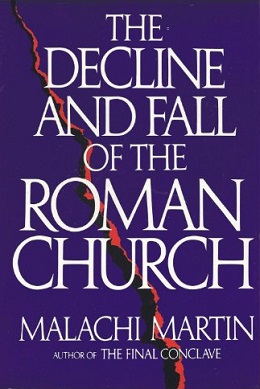
The Decline and Fall of the Roman Church is a 1981 non-fiction book by Catholic priest and author Malachi Martin.

The discipline and administration of the Latin Church underwent important changes from 1517 to 1585 during and Counter-Reformation, specifically at the Council of Trent.

The Ukrainian Greek Catholic Church in the USSR refers to the period in its history between 1939 and 1991, when Ukraine was part of the Soviet Union.
Martin, Malachi, The Keys of This Blood: The Struggle for World Dominion between Pope John Paul II, Mikhail Gorbachev, and the Capitalist West, Simon & Schuster, New York, 1990 ISBN 0-671-69174-0